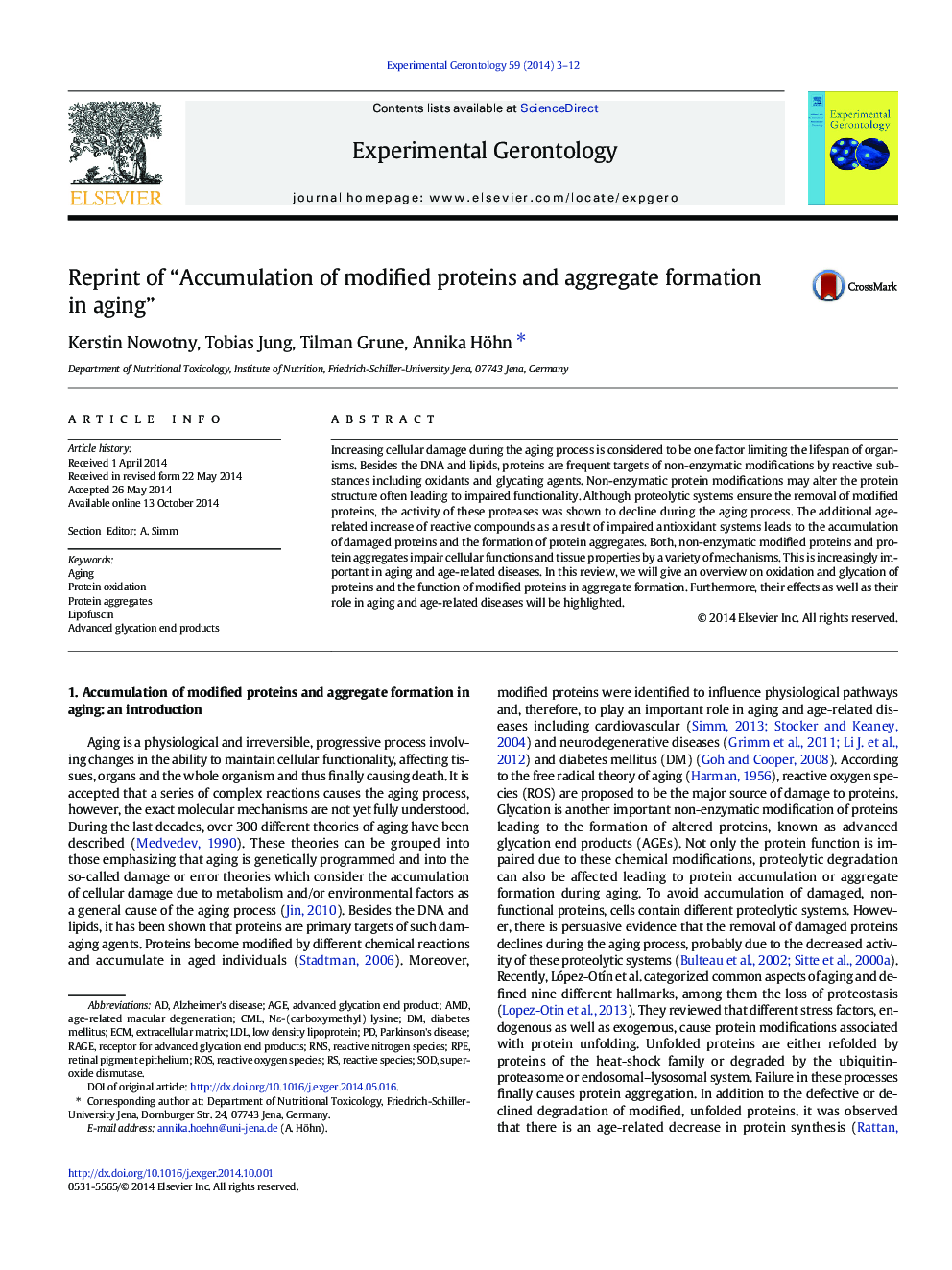| Article ID | Journal | Published Year | Pages | File Type |
|---|---|---|---|---|
| 8264010 | Experimental Gerontology | 2014 | 10 Pages |
Abstract
Increasing cellular damage during the aging process is considered to be one factor limiting the lifespan of organisms. Besides the DNA and lipids, proteins are frequent targets of non-enzymatic modifications by reactive substances including oxidants and glycating agents. Non-enzymatic protein modifications may alter the protein structure often leading to impaired functionality. Although proteolytic systems ensure the removal of modified proteins, the activity of these proteases was shown to decline during the aging process. The additional age-related increase of reactive compounds as a result of impaired antioxidant systems leads to the accumulation of damaged proteins and the formation of protein aggregates. Both, non-enzymatic modified proteins and protein aggregates impair cellular functions and tissue properties by a variety of mechanisms. This is increasingly important in aging and age-related diseases. In this review, we will give an overview on oxidation and glycation of proteins and the function of modified proteins in aggregate formation. Furthermore, their effects as well as their role in aging and age-related diseases will be highlighted.
Keywords
ECMRNSCMLAMDRPERAGENε-(carboxymethyl) lysineROSretinal pigment epitheliumProtein oxidationAlzheimer's diseaseParkinson's diseaseprotein aggregatesDiabetes mellitusAgingSODAgeage-related macular degenerationSuperoxide dismutaseLipofuscinlow density lipoproteinLDLExtracellular matrixAdvanced glycation end productsadvanced glycation end productreactive nitrogen speciesReactive speciesReactive oxygen speciesReceptor for advanced glycation end products
Related Topics
Life Sciences
Biochemistry, Genetics and Molecular Biology
Ageing
Authors
Kerstin Nowotny, Tobias Jung, Tilman Grune, Annika Höhn,
